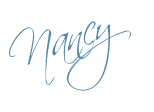I'm working a fun quilt. It is Lori Smith’s “Pinwheels for Caroline”.
I have finished all of the blocks for the center and am in the process of sewing the blocks into rows.
It hasn’t been a “stash reduction” quilt, but definitely a “scrap reduction” quilt. The pinwheel blocks finish 3 inches, so each of the half-square triangles (HST) are 2 inches before sewing into the pinwheel. The HST alternate blocks also finish 3 inches.
I began by pouring through my scraps looking for strips – 2-1/2 inches to 3-1/2 inches for the pinwheel HSTs and 3-1/2 inches and wider for the alternate HSTs, 3 to 4 inch squares, and miscellaneous triangles.
Then, depending on the size of the strip I used one of three methods to make the HSTs:
Squares with line drawn corner to corner, then stitched scant ¼ inch on each side of the line:
Triangles cut using an Easy Angle ruler:
Or Thangles papers (for the 2-inch HSTs
If you haven’t used Thangles, they are a fast, very accurate way to make HSTs. I typically don’t use them on HSTs that are larger than 3 inches, but if you need a lot of HSTs and don’t want to have to square them up, Thangles are a great tool.
Here’s a
link to the Thangles website with detailed instructions.
I ended up using three different sewing machine feet while sewing all these HSTs, and then assembling them into pinwheel blocks. When sewing the Thangles, I used an open-toe zig-zag foot so I could more easily see the lines to sew on.
When sewing the triangles cut with the Easy Angle ruler, I used my ¼-inch quilting foot with the fabric guide.
And when I was sewing the HSTs using the “squares” method, I used my regular ¼-inch quilting foot.
I also had to keep switching my stitch length. When stitching on Thangles paper, I used a smaller stitch – 1.6 on my machine to make sure the HST didn't loosen while removing the paper.
I also found it useful to use a 3.5 basting stitch to make sure all of the points on my pinwheels were aligned, however, after the first several blocks I found that everything was aligned well and I didn’t need to take this extra step.
Once this quilt is quilted and bound, I’m going to overdye it with a tan Rit dye to tone down the lighter cream backgrounds. I want the quilt to have an overall darker look to it without the little pops of “light” from the lighter and brighter colors. (At least, that’s the plan right now. We’ll see what I end up doing when the time comes.)
All in all, I’m loving this scrappy quilt -- and enjoying using up a bunch of scraps..
Thanks for visiting, and have a great weekend!



















